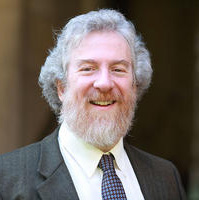Shavu’ot—Hide and Seek with Torah

In the kiddush we recite this evening, and in all the traditional services of Shavu’ot, we speak of “chag haShavuot hazeh, z’man mattan Torateinu” (This Festival of Shavu’ot, season of the giving of our Torah. [Siddur Sim Shalom for Shabbat and Festivals, 42]). There is a subtle yet subversive element to this description of the day: the parallels for Pesah and Sukkot speak of the “season of our liberation” and “season of our rejoicing,” each of which can reasonably be derived from biblical sources; however, there is no biblical source that associates Shavu’ot with the giving of the Torah at Sinai. Shavu’ot is called chag haKatsir in association with the harvest (Exod. 23:16), and the name Shavu’ot derives from the 49 days of counting the Omer after Pesah; the Talmud (BT Pesachim 68b) even uses the term Atzeret (conclusion), seeing the day as “concluding” Pesah much as Shemini Atzeret serves as conclusion to Sukkot.
We are not able to establish the precise origin of the phrase “z’man mattan Torateinu,” but it is certainly to be located within the early rabbinic period. There are substantial midrashic efforts to fix the date of the Revelation at Sinai at 49 days after the Exodus—that is, on Shavu’ot.
Following the destruction of the Temple, Shavu’ot presented the greatest challenge of the Three Pilgrimage Festivals (regalim). Pesah would retain a universal significance, with the seder growing to become one of the most beloved and universally observed of Jewish rituals. The sukkah similarly can be built anywhere in the world, but the harvest offerings associated with Shavu’ot could not be perpetuated without the Temple. So the “reconstruction” or reinvention of Shavu’ot as a celebration of Revelation must be seen as an act of inspired genius by our Rabbis many centuries ago. Our tradition has guided the focus of the day away from the harvest, and over a period of centuries, has built Shavu’ot into a celebration of Torah.
An interesting “musical midrash” connects the theme of Torah between Shavu’ot and Simhat Torah (also a “late” invention). The musical leitmotif for Shavu’ot is the melody used for chanting a complex Aramaic poem, Akdamut; this same melody is used widely for the special formula used for calling the Hatan/Kallat Torah for the special aliyah that concludes the reading of the Torah. Shavu’ot and Simhat Torah invite us to celebrate Torah in Revelation and recitation, our acceptance and perpetual engagement.
For “even if the sky were parchment and the oceans filled with ink . . . the story of God’s glory would not be complete . . . and yet we rejoice that God blessed us and Revealed to us the Torah” (paraphrase of Akdamut,which precedes the Torah reading on Shavu’ot).



